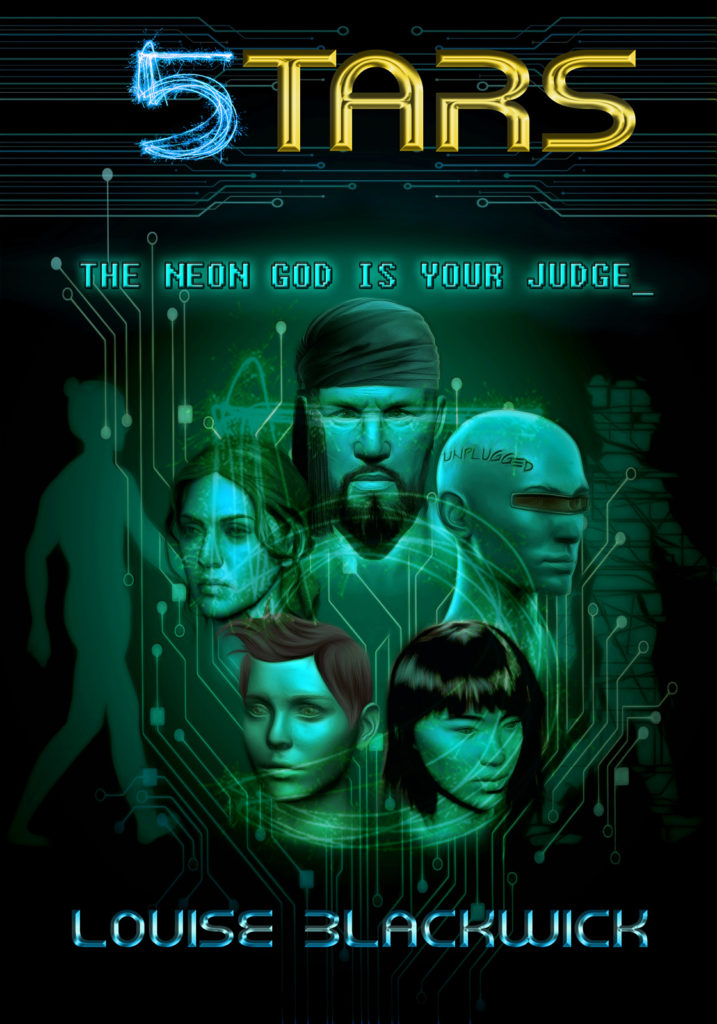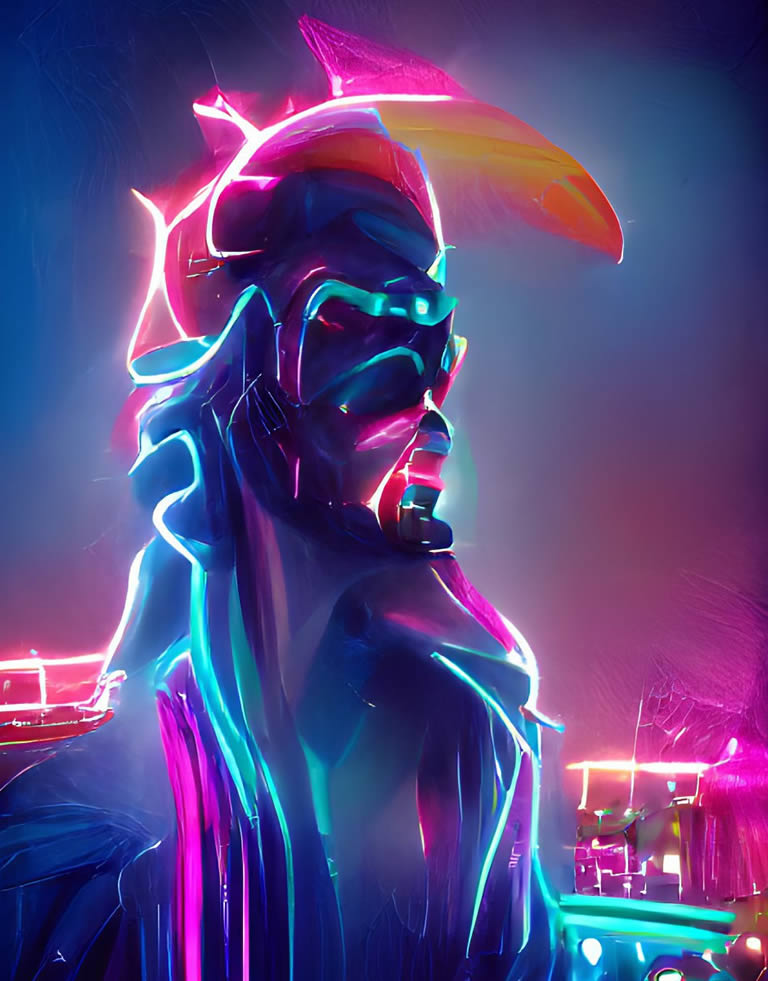Sometime mid-2021, Louise Blackwick, one of our most promising authors, came to us after a long period of illness with a new genre of speculative fiction. She called it Neon Science-Fiction, a subgenre of science fiction that blended elements of Post-cyberpunk, Nanopunk and Cyber noir.
She had discovered this genre entirely by chance while working on her new WIP – a sci-fi novel with survival-thriller undertones she had titled “5 Stars”. Because the story failed to neatly fit into a genre, she felt unsettled about her discovery, worried that her contract might be discontinued or that her novel will not sell very well. A book without a definite genre can often have trouble finding its audience.
Initially, we shared some of her concerns, but something about the project called to us and intrigued us. “5 Stars” was indeed, unusual in its scope and at the same time, thematically outstanding and originally grandiose. The novel promised to reflect on issues many of us (the author particularly) were struggling during the Covid-19 pandemic: escapism, will to survive, persistence in the face of an austere, bleak future.
We started looking more closely into her discovery, parading her written draft before hundreds of pairs of eyes, trying to see what she saw when she had coined the term: Neon Science-Fiction. We ended up taking the novel apart and doing our own rigorous research, trying to put it in the perspective of literary genres both uncommon and common.

After two weeks of internal research, we concluded “5 Stars” had passed the rigors of literary criticism, only to emerge more fiercely unique and exceptional than we had initially expected. We finally decided to market “5 Stars” as a one-of-a-kind project; a sci-fi novel that was to belong to a genre that didn’t technically exist. Despite the very real risk the novel could end up without an audience, we unanimously decided our publishing house would support Louise Blackwick’s new genre regardless.
Neon Science-Fiction was thus born as a subgenre of the Science-Fiction genre. It was a subgenre specifically polished to highlight a digitalization of consciousness coupled with a battle for the soul of mankind, but in a contemporary, technology-centred and ultra-digital context. Neon Science-Fiction was not only inspired by the neon aesthetic of its imagery, but also by the thematic dichotomy between light and darkness that permeated every layer of the story. To quote Blackwick herself:

“Both thematically and stylistically, there are at least two types of LIGHT and two types of DARKNESS, both personal and impersonal, both found in juxtaposition with the light of humanity and that of digital advertisements. This is what, in my opinion, distinguishes the neon sci-fi subgenre from its close relatives. There is the organic light of humanity and there is neon light; there is the deep dark of the mind and there is the shiny dark of a black screen. There is both symbiosis and struggle between the two categories, with one often subverting the other both visually and thematically.”
It didn’t come as a surprise that “the Dark” became not only a symbolic set in her work, but a personified category altogether. Unlike other sci-fi subgenres, Louise Blackwick’s “Neon Lights” were not haunted by the corporate, consumeristic views Post-Cyberpunk offered. In fact, the presence of neon lights in her work offered a more positive outlook in the battle for the preservation of sentient consciousness.
Between Neon Lights and the Dark, we choose Neon Lights all the way. Or as the author put it herself, “even the blazing neon light of a billion advertisements is a more positive fate than Oblivion.” 5 Stars, with its spectacle of dazzling neon lights and its gritty bleak undertones brings to the surface a sense of ancestral meaning and purposeful depth. To that end, we deemed “5 Stars” a pioneering, high-concept work of science-fiction worthy of giants like Arthur C. Clarke, Frank Herbert and Isaac Asimov.
As far as everyone at Creascriptum is concerned, we fully embrace Louise Blackwick’s discovery, and urge new readers and writers to give Neon Science Fiction a try. As devoted publishers, we are excited to bring something fresh to the literary world and eager to see it get out more widely.
It is our belief that Neon Science Fiction can be a creative new outlet for readers looking for science fiction books possessed by the neon aesthetic; books with a more optimisticoutlook on the protection and preservation of our unique human consciousness. If you are interested in a more detailed account of what sets Neon Science-Fiction apart from the rest, we recommend you read Louise Blackwick’s article: The birthplace of Neon Science-Fiction: how I accidentally discovered a new subgenre of Science-Fiction.

